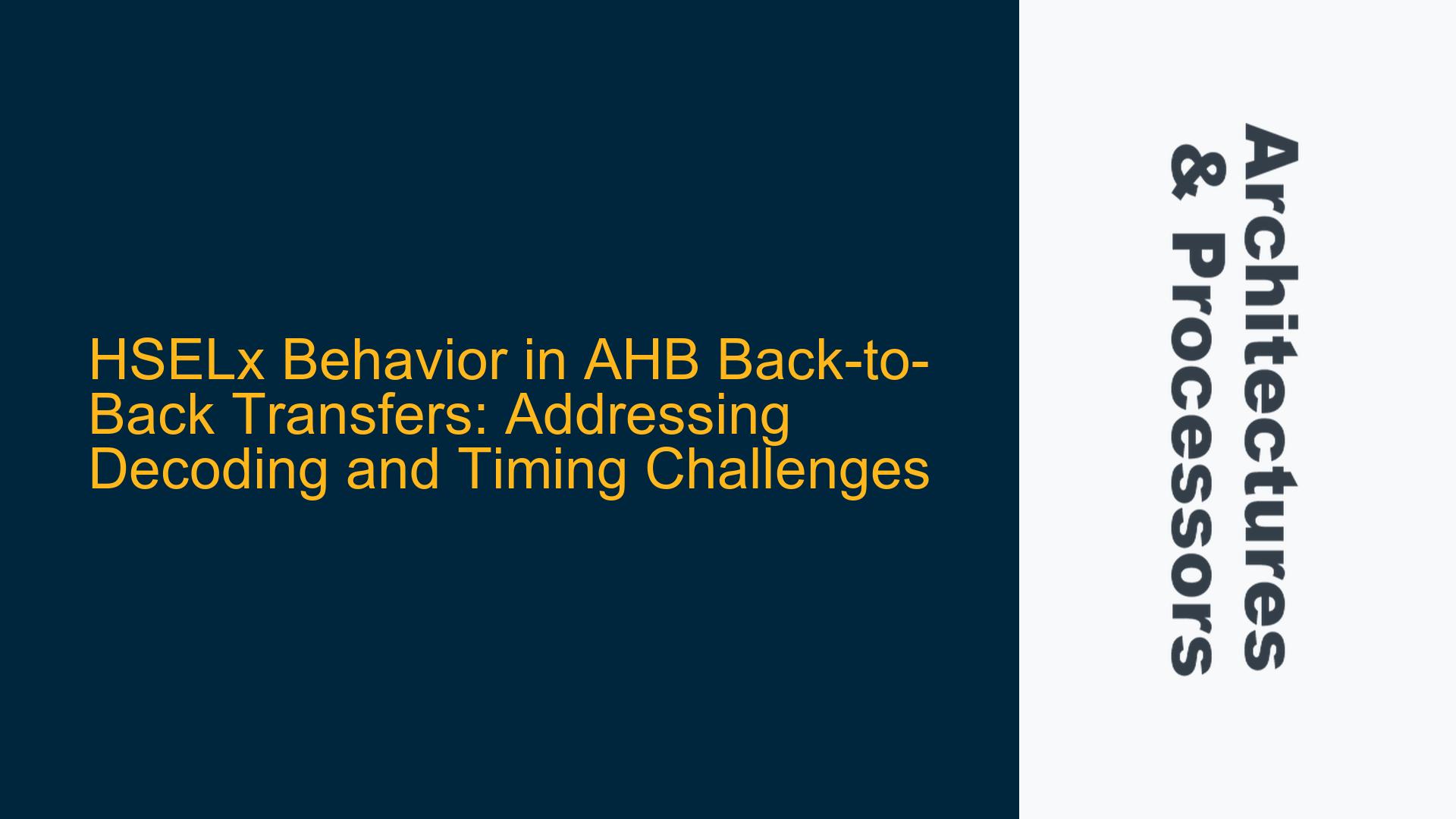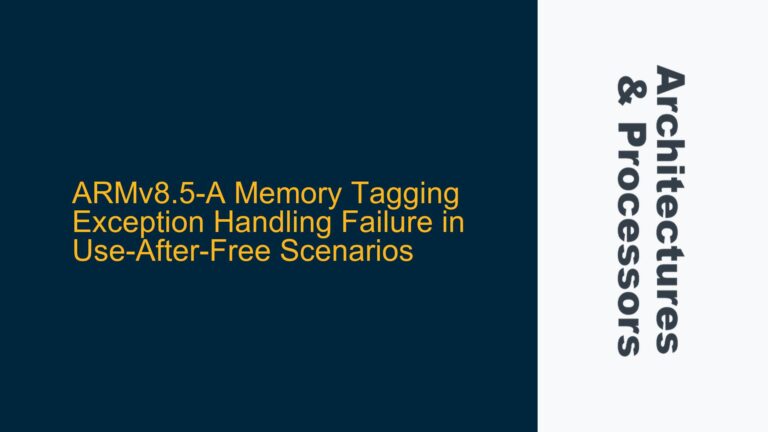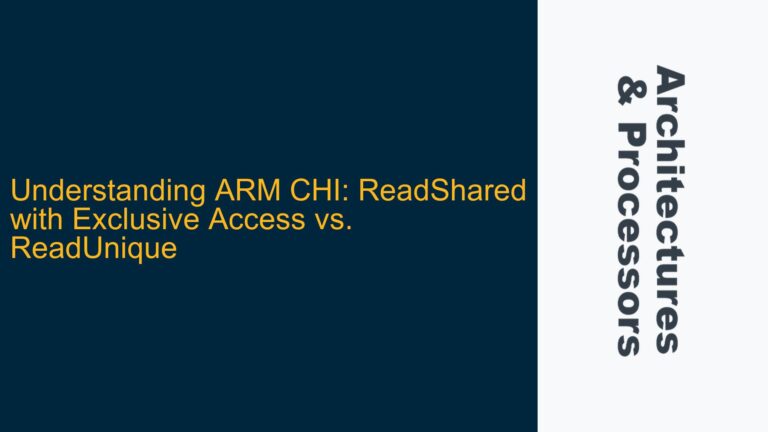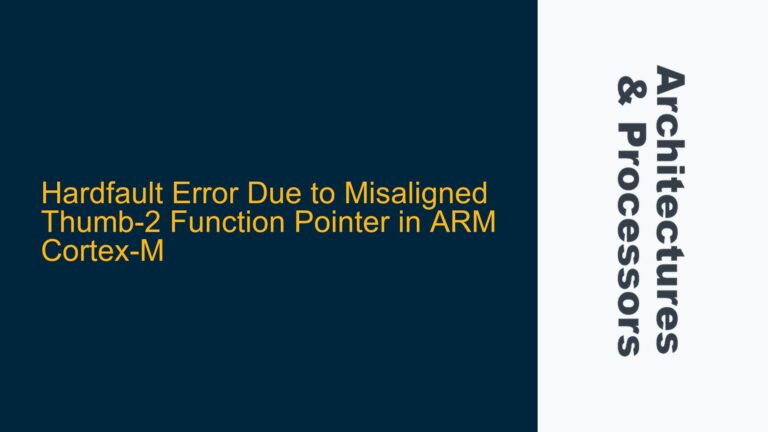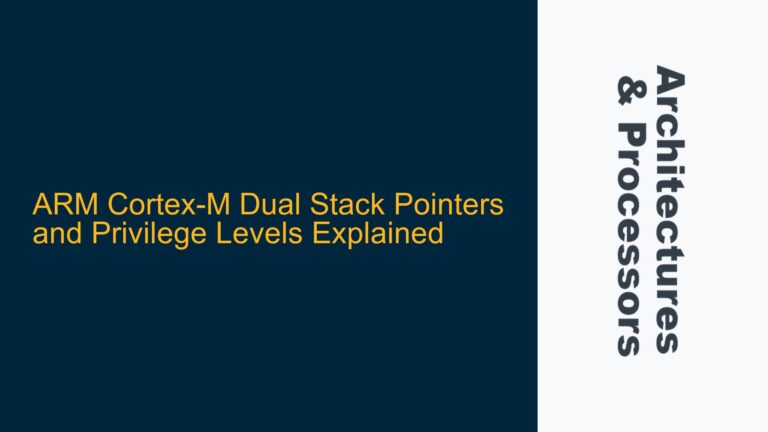HSELx Signal Behavior During Back-to-Back AHB Transfers
In an ARM AHB (Advanced High-performance Bus) system, the HSELx signal plays a critical role in determining which slave is being addressed during a transaction. The scenario described involves a single AHB master initiating two consecutive transactions: one to address A (Slave 1) and another to address B (Slave 2). The key question revolves around the behavior of the HSELx signals during these back-to-back transfers and how the address decoder samples the address from the address bus.
The HSELx signal is generated combinatorially based on the HADDR (AHB address bus) signal. This means that the HSELx signal for a specific slave will be asserted high whenever the HADDR matches the address range allocated to that slave. Importantly, the HSELx signal is not influenced by other AHB signals such as HTRANS, HCLK, or HREADY. This combinatorial nature ensures that the HSELx signal responds immediately to changes in the HADDR, allowing for efficient address decoding and slave selection.
In the described scenario, the master initiates the first transaction to address A (Slave 1) in the first clock cycle, followed by a second transaction to address B (Slave 2) in the second clock cycle. During the first clock cycle, the address decoder will assert HSEL1 high because the HADDR matches the address range for Slave 1. In the second clock cycle, the HADDR changes to match the address range for Slave 2, causing the address decoder to assert HSEL2 high and de-assert HSEL1. This behavior ensures that the correct slave is selected for each transaction.
However, the timing of the HSELx signal assertion and de-assertion is critical. The address decoder must sample the HADDR at the appropriate time to ensure that the HSELx signal is correctly asserted for the duration of the address phase of each transaction. If the address decoder does not sample the HADDR correctly, it could lead to incorrect HSELx signal behavior, resulting in erroneous slave selection and potential system failures.
Combinatorial Decoding of HADDR and HSELx Signal Generation
The generation of the HSELx signal is purely combinatorial, meaning it is directly derived from the HADDR signal without any dependency on the clock or other control signals. This design choice ensures that the HSELx signal can respond immediately to changes in the HADDR, allowing for efficient and timely slave selection. However, this combinatorial nature also introduces certain challenges, particularly in systems with complex address maps or high-speed operation.
The address decoder must be designed to decode the HADDR signal and generate the appropriate HSELx signal within a single clock cycle. This requires careful consideration of the logic complexity and timing constraints to ensure that the HSELx signal is stable and valid before the end of the address phase. In systems with a large number of slaves or complex address maps, the combinatorial logic required for address decoding can become quite complex, potentially leading to timing violations or increased power consumption.
To mitigate these challenges, it is recommended to simplify the address map as much as possible. For example, using only the most significant bits (MSBs) of the HADDR for address decoding can reduce the complexity of the combinatorial logic. Additionally, ensuring that each slave is allocated a minimum of 1KB of address space allows the address decoder to ignore the lower 10 bits of the HADDR, further simplifying the decoding logic.
Another important consideration is the handling of unallocated addresses. In an AHB system, there must always be a slave selected to drive the HREADY and HRESP signals during the data phase of a transfer. To ensure this, any addresses not allocated to specific slaves should be assigned to a "default slave" that can return an ERROR response to any invalid accesses. This ensures that the system remains stable and predictable, even in the presence of erroneous or unexpected addresses.
Impact of HREADY on HSELx Signal and Address Phase Timing
The HREADY signal plays a crucial role in the timing and behavior of the HSELx signal during AHB transactions. HREADY is driven by the selected slave and indicates whether the slave is ready to complete the current data phase of the transfer. When HREADY is low, the address phase of the current transfer is extended, causing the HADDR and other control signals to remain stable until HREADY is asserted high.
This behavior has important implications for the HSELx signal. Since the HSELx signal is generated combinatorially from the HADDR, it will remain stable as long as the HADDR remains stable. However, if the HADDR changes while HREADY is low (indicating a stalled transfer), the HSELx signal will also change accordingly. This can lead to situations where the HSELx signal for a particular slave is asserted for multiple clock cycles, even though the address phase of the transfer has not yet completed.
To ensure correct operation, the HSELx signal (along with HADDR and other control signals) should only be sampled by the slave when HREADY is high, indicating the end of the current address phase. This ensures that the slave has a stable and valid set of control signals to process the transfer. If the HSELx signal is sampled while HREADY is low, it could lead to incorrect slave selection or other timing-related issues.
In the context of back-to-back transfers, the behavior of the HSELx signal is further influenced by the timing of the HREADY signal. If the first transfer to Slave 1 is stalled (HREADY low), the address phase of the second transfer to Slave 2 will be delayed until the first transfer completes. During this time, the HSELx signal for Slave 1 will remain asserted, and the HSELx signal for Slave 2 will not be asserted until the address phase of the second transfer begins. This ensures that the correct slave is selected for each transfer, even in the presence of stalled transfers.
Troubleshooting HSELx Signal Issues in AHB Systems
When troubleshooting issues related to the HSELx signal in AHB systems, it is important to consider both the combinatorial nature of the signal and the timing constraints imposed by the HREADY signal. The following steps can help identify and resolve common issues related to HSELx signal behavior:
-
Verify Address Decoding Logic: Ensure that the address decoder is correctly decoding the HADDR signal and generating the appropriate HSELx signal for each slave. This includes verifying that the address ranges allocated to each slave are correct and that the combinatorial logic used for decoding is free from errors.
-
Check Timing Constraints: Verify that the address decoder meets the timing constraints required for generating the HSELx signal within a single clock cycle. This may involve analyzing the synthesis reports and ensuring that the combinatorial logic is optimized for speed.
-
Monitor HREADY Signal Behavior: Observe the behavior of the HREADY signal during transactions to ensure that it is being correctly driven by the selected slave. If HREADY is being driven low, verify that the address phase of the transfer is being extended as expected and that the HSELx signal remains stable during this time.
-
Simulate Back-to-Back Transfers: Use simulation to test the behavior of the HSELx signal during back-to-back transfers. This can help identify any timing issues or incorrect slave selection that may occur during these scenarios.
-
Implement Default Slave: Ensure that a default slave is implemented to handle any unallocated addresses. This ensures that the system remains stable and predictable, even in the presence of erroneous or unexpected addresses.
-
Review Synthesis Constraints: Review the synthesis constraints to ensure that the address decoder logic is being correctly synthesized. This includes checking that the logic is optimized for speed and that there are no timing violations.
By following these steps, you can identify and resolve issues related to the HSELx signal in AHB systems, ensuring correct and efficient operation of the bus fabric.
Conclusion
The behavior of the HSELx signal in AHB systems is critical for ensuring correct slave selection and efficient operation of the bus fabric. By understanding the combinatorial nature of the HSELx signal and the impact of the HREADY signal on its timing, you can design and troubleshoot AHB systems with confidence. Simplifying the address map, implementing a default slave, and carefully monitoring the timing constraints are key strategies for ensuring correct HSELx signal behavior and overall system stability.
